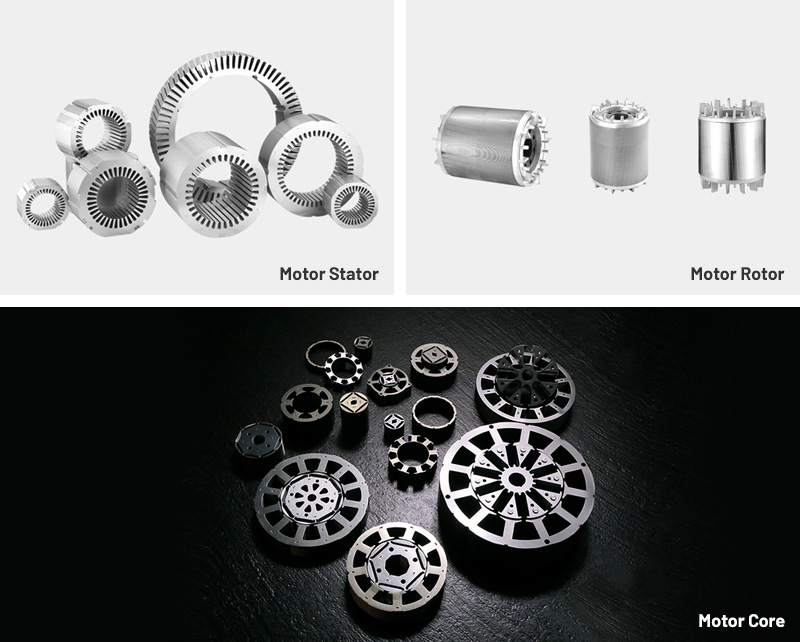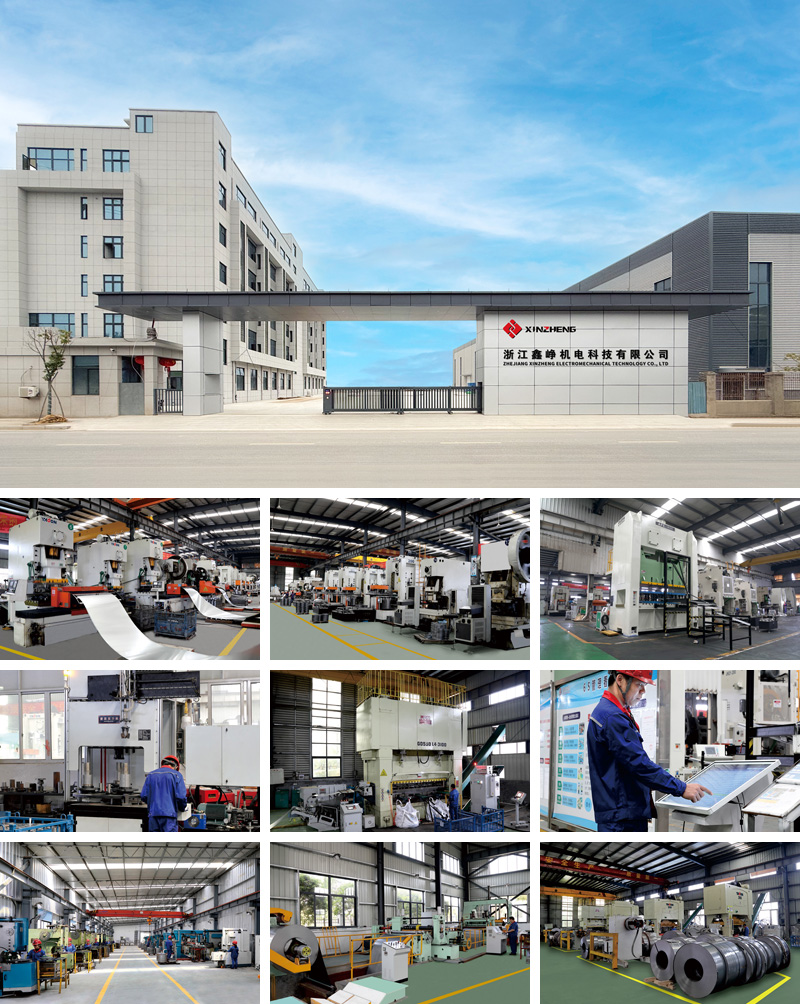High-temperature applications present unique challenges for industrial motors, which are widely used in sectors such as chemical processing, metallurgy, power generation, and heavy machinery. Elevated operating temperatures can accelerate insulation degradation, increase energy losses, and reduce motor longevity. As global energy-efficiency standards tighten and industrial processes demand higher reliability, motor manufacturers are increasingly focusing on materials and components that can withstand thermal stress without compromising performance.
Within the motor, the stator is the primary site of magnetic flux generation and energy conversion. The YE4 series high-temperature heat-resistant motor stator laminations are engineered to maintain magnetic efficiency and structural stability under elevated thermal conditions. These laminations enable motors to operate reliably at high temperatures while minimizing core losses, reducing operating costs, and extending service life.
Motor efficiency is significantly influenced by core losses in the stator. Two primary loss mechanisms are:
Eddy Current Losses – Induced circulating currents in the stator laminations generate heat and reduce efficiency.
Hysteresis Losses – Repeated magnetization and demagnetization of the steel during AC operation leads to energy dissipation as heat.
Heat-resistant laminations, such as those in the YE4 series, are designed to mitigate these losses while maintaining magnetic permeability under high-temperature conditions. By using specialized silicon electrical steel and advanced insulation coatings, these laminations allow motors to maintain optimal torque, reduce temperature rise, and support continuous high-load operation.
YE4 series stator laminations are manufactured from premium-grade silicon electrical steel with 2–3% silicon content to improve resistivity and reduce hysteresis loss. The steel exhibits high magnetic permeability, low coercivity, and enhanced thermal stability, enabling efficient operation at elevated temperatures. A uniform, high-temperature-resistant insulating coating is applied to each lamination to electrically isolate layers, suppress eddy currents, and prevent thermal degradation.
Laminations are precision-stamped or laser-cut to match the stator’s slot configuration and core diameter. Typical lamination thickness ranges from 0.35 mm to 0.50 mm, optimized to balance magnetic efficiency with mechanical strength. Accurate slot dimensions ensure proper winding accommodation and uniform magnetic flux distribution, which is critical for stable torque and reduced vibration.
Material Preparation: Electrical steel coils are inspected for uniformity and surface quality.
Precision Cutting: Laminations are stamped or laser-cut to exact specifications, minimizing burrs and dimensional variation.
Insulation Application: Each lamination receives a high-temperature-resistant coating to maintain electrical isolation and reduce eddy currents.
Stacking and Core Assembly: Laminations are carefully stacked and aligned to form a mechanically stable core with minimal air gaps.
Final Integration: The core is integrated with stator windings, and the assembly may be varnished or impregnated to enhance thermal performance and mechanical integrity.
This process ensures that YE4 stator laminations deliver consistent magnetic properties, thermal resilience, and mechanical stability for demanding industrial applications.
The performance of YE4 series stator laminations is influenced by several key factors:
Material Quality: High-grade silicon steel with consistent magnetic properties is essential to minimize core losses and maintain efficiency under thermal stress.
Lamination Thickness: Optimized thickness reduces eddy current losses while retaining mechanical strength at high speeds.
Insulation Quality: Durable high-temperature coatings prevent short-circuits between lamination layers and maintain magnetic performance.
Dimensional Accuracy: Precise slot geometry and lamination alignment reduce vibration, noise, and torque ripple.
Stacking Techniques: Uniform stacking eliminates gaps, ensures even flux distribution, and enhances structural integrity.
Thermal Management: Laminations must efficiently dissipate heat to prevent insulation breakdown and extend motor life.
Adhering to these factors ensures YE4 laminations support reliable, energy-efficient performance even in high-temperature industrial settings.
Selecting a reliable supplier is critical for maintaining consistent lamination quality:
Material Certification: Suppliers should provide documentation of steel grade, lamination thickness, and thermal performance characteristics.
Manufacturing Capability: Advanced stamping, coating, and stacking processes ensure precision and durability.
Quality Assurance: Batch-level testing, magnetic loss measurement, and dimensional verification guarantee compliance with specifications.
Regulatory Compliance: Suppliers should meet international efficiency standards (IE3/IE4) and environmental regulations.
Delivery Reliability: Stable supply chains prevent production delays and support long-term industrial operations.
A trusted supplier ensures that YE4 laminations maintain performance consistency and operational reliability across all production batches.
Even with high-quality laminations, challenges remain in high-temperature motor applications:
Excessive Core Losses: Inadequate material selection, poor insulation, or improper lamination thickness can increase energy losses.
Thermal Degradation: High operating temperatures can accelerate insulation aging, reducing motor lifespan.
Mechanical Vibration: Misalignment or inconsistent lamination stacking can lead to vibration, noise, and uneven torque.
Batch Variability: Variations in lamination quality may result in inconsistent motor performance.
Cost Constraints: Premium materials and precision manufacturing increase production costs, requiring careful cost-benefit analysis.
Addressing these challenges involves rigorous quality control, precise engineering, and careful supplier management.
YE4 series high-temperature stator laminations are suitable for a wide range of demanding applications:
Industrial Pumps and Compressors: Continuous operation in chemical plants, power generation, and water treatment facilities.
Fans and Ventilation Systems: Motors in high-temperature HVAC environments, furnaces, and industrial ventilation systems.
Heavy Machinery: Motors for metallurgy, casting, and forging processes exposed to elevated thermal loads.
Energy-Intensive Systems: Motors in renewable energy or hybrid energy applications where high efficiency under thermal stress is critical.
Motor Retrofits and Upgrades: Replacing older stator laminations with YE4 components improves thermal performance, reduces energy losses, and extends motor life.
In all cases, high-quality laminations directly influence efficiency, torque stability, and operational reliability under extreme conditions.
Manufacturers are adopting high-grade silicon steel with refined grain orientation and enhanced thermal resistance to meet evolving IE3/IE4 efficiency standards and high-temperature requirements.
High-temperature-resistant coatings improve lamination durability, reduce thermal degradation, and enable reliable operation in harsh industrial environments.
Variable-frequency drives (VFDs) are increasingly used to control motor speed. YE4 laminations are designed to maintain efficiency and thermal stability under fluctuating voltage and frequency conditions.
Computer-controlled stamping, automated stacking, and non-destructive testing ensure consistent lamination performance, reduce variability, and improve production efficiency.
Industrial buyers increasingly require traceable materials, batch-level certification, and compliance with energy-efficiency and environmental standards. Transparent suppliers are more competitive in global markets.
Q: Why are high-temperature stator laminations important?
A: They reduce core losses, maintain magnetic efficiency, and withstand elevated operating temperatures, extending motor life and ensuring reliable performance.
Q: How does lamination thickness affect performance at high temperatures?
A: Optimized thickness reduces eddy current losses while maintaining mechanical strength, supporting stable operation under thermal stress.
Q: What role does insulation play in high-temperature laminations?
A: High-temperature-resistant insulation prevents interlaminar short circuits, reduces heat generation, and maintains magnetic efficiency.
Q: How critical is supplier selection for YE4 laminations?
A: Supplier quality directly affects material consistency, thermal performance, and compliance with energy-efficiency standards, impacting motor reliability and lifespan.
YE4 series high-temperature heat-resistant motor stator laminations are engineered for demanding industrial environments where thermal resilience, energy efficiency, and mechanical stability are critical. Precision-engineered from premium electrical steel, with optimized thickness and high-temperature insulation, these laminations reduce core losses, enhance torque stability, and support long-term motor reliability. For motor manufacturers and OEMs, careful material selection, supplier management, and consistent manufacturing processes are essential to meet stringent efficiency standards and operational demands. As industrial motors face increasingly harsh thermal conditions, YE4 stator laminations remain a key component for high-performance, energy-efficient motor solutions.
Product Category

Comprehensive Strength


Copyright © Zhejiang Xinzheng Electromechanical Technology Co., Ltd. All Rights Reserved.
This website uses cookies to ensure you get the best experience on our website.